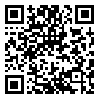BibTeX | RIS | EndNote | Medlars | ProCite | Reference Manager | RefWorks
Send citation to:
URL: http://jdisabilstud.org/article-1-3290-en.html
2- Professor of the Department of Psychology and Education of Exceptional Children, Allameh Tabatabai University, Tehran, Iran
3- Associate Professor, Department of Psychology and Education of Exceptional Children, Allameh Tabatabai University, Tehran, Iran
4- Associate Professor, Department of Measurement and Measurement, Allameh Tabatabai University, Tehran, Iran
Abstract
Background & Objectives: The theory of mind is underdeveloped in children with intellectual disabilities, leading to significant impairment in their overall functioning. Children with intellectual disabilities often struggle in social interactions due to difficulties in understanding the thoughts, emotions, and intentions of others. It is important to remember that low social skills can have a lasting negative impact on children. To help children with intellectual disabilities develop their understanding of others and improve their social skills, it is important to create activities that focus on social interactions, expressing thoughts and feelings, and role-playing. These activities provide valuable opportunities for children to learn how thoughts and behaviors are connected, as well as how to express their thoughts, feelings, and intentions. Furthermore, gaining a better understanding of one's mind and that of others contributes to successful social behavior. Therefore, the objective of this study was to develop an educational program centered around group activities and assess its impact on the theory of mind and social skills of children with mild intellectual disabilities.
Methods: This study was semi-experimental, using a pretest-posttest design, and included a two-month follow-up with a control group. The study focused on all students with mild intellectual disabilities in Tehran's second elementary school attending exceptional schools during the 2022-23 school year. The sample included 28 male students, selected using convenience sampling, and then randomly divided into experimental and control groups. Inclusion criteria were: Informed consent of the parents; IQ greater than 50; Studying in the second elementary level (4th to 6th grades); Not having received a similar educational program in the past or during the research and Exclusion criteria were: Incomplete response to questionnaires; Absence of more than three sessions. The instruments used in the study were the Theory of Mind Questionnaire (Stirenman, 1994) and the Social Competence Scale (Fellner et al., 1990). The intervention program was carried out with the experimental group over 24 sessions, each lasting 90 minutes (3 sessions per week for 2 months) between the pre-test and post-test. Additionally, a follow-up was conducted two months after the sessions. The data were analyzed using repeated measures analysis of variance (α=0.05).
Results: The results of a repeated measures multivariate analysis of variance showed that the educational program in this study has a significant effect on the combination of theory of mind and social adequacy in children with mild intellectual disabilities. The program was able to explain 63% of the variance of these variables (p<0.001). Time has a significant effect on the linear combination of theory of mind and social adequacy, explaining 82% of the variance of these variables (p<0.001). In addition, the interactive effect of group and time on the combination of theory of mind and social adequacy is significant. This interaction explains 79% of the variance of these variables (p<0.001). In the repeated measures analysis of variance, it was found that time had a significant effect on both theory of mind and social adequacy (p<0.001), indicating that the scores for these variables changed over time, independent of group membership effects. Additionally, the interaction between time and group had a significant effect on both theory of mind and social adequacy (p<0.001). There is a notable difference between the experimental and control groups in terms of changes in these variables over time. In other words, both theory of mind and social adequacy have shown improvement over time in the experimental group. Additionally, the results of Bonferroni’s post hoc test indicated a significant difference between pre-test and post-test scores (p<0.001) and pre-test and follow-up scores (p<0.001) of the experimental group about the theory of mind and social adequacy. However, there was no significant difference between post-test and follow-up scores (p<0.05), indicating that the effects of the educational program remained stable after two months.
Conclusion: According to the results parents, teachers, psychologists, and rehabilitation centers can utilize the plays in this study's educational program to enhance the theory of mind and social skills of children with mild intellectual disabilities.
| Rights and permissions | |
 |
This work is licensed under a Creative Commons Attribution-NonCommercial 4.0 International License. |



